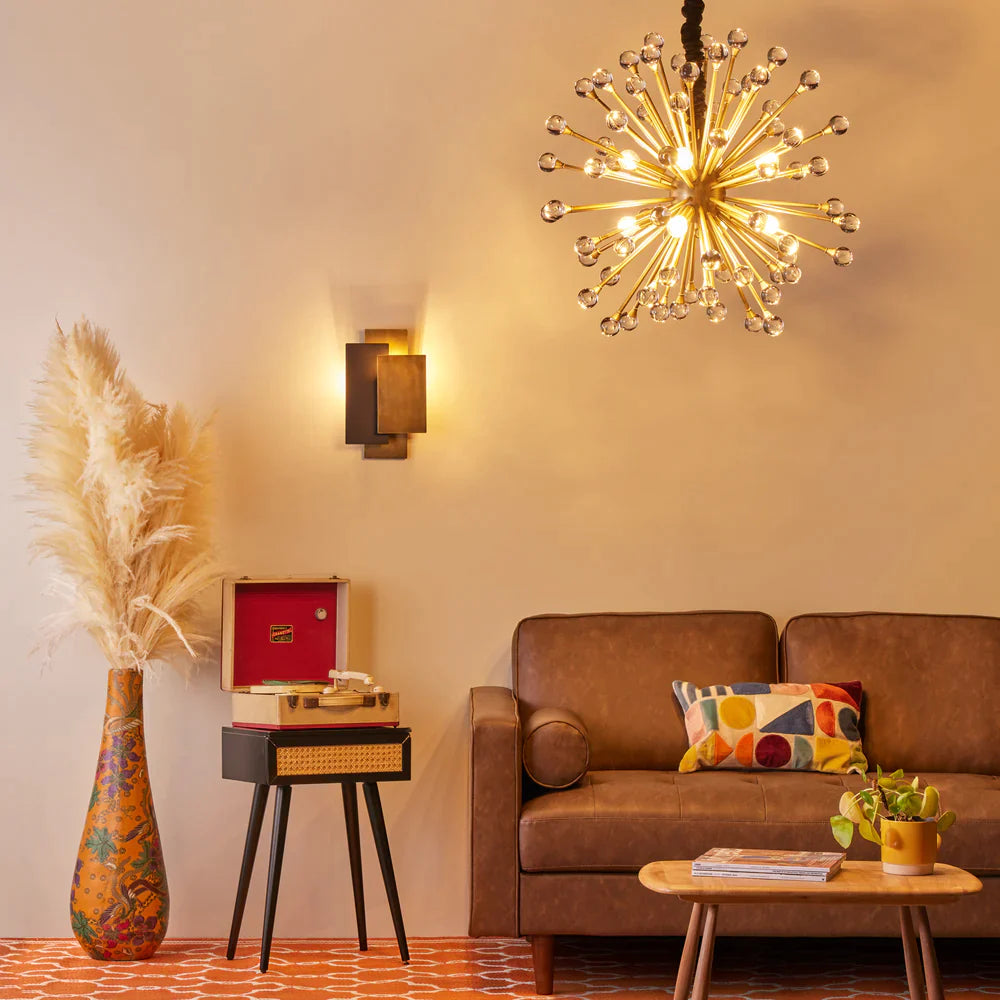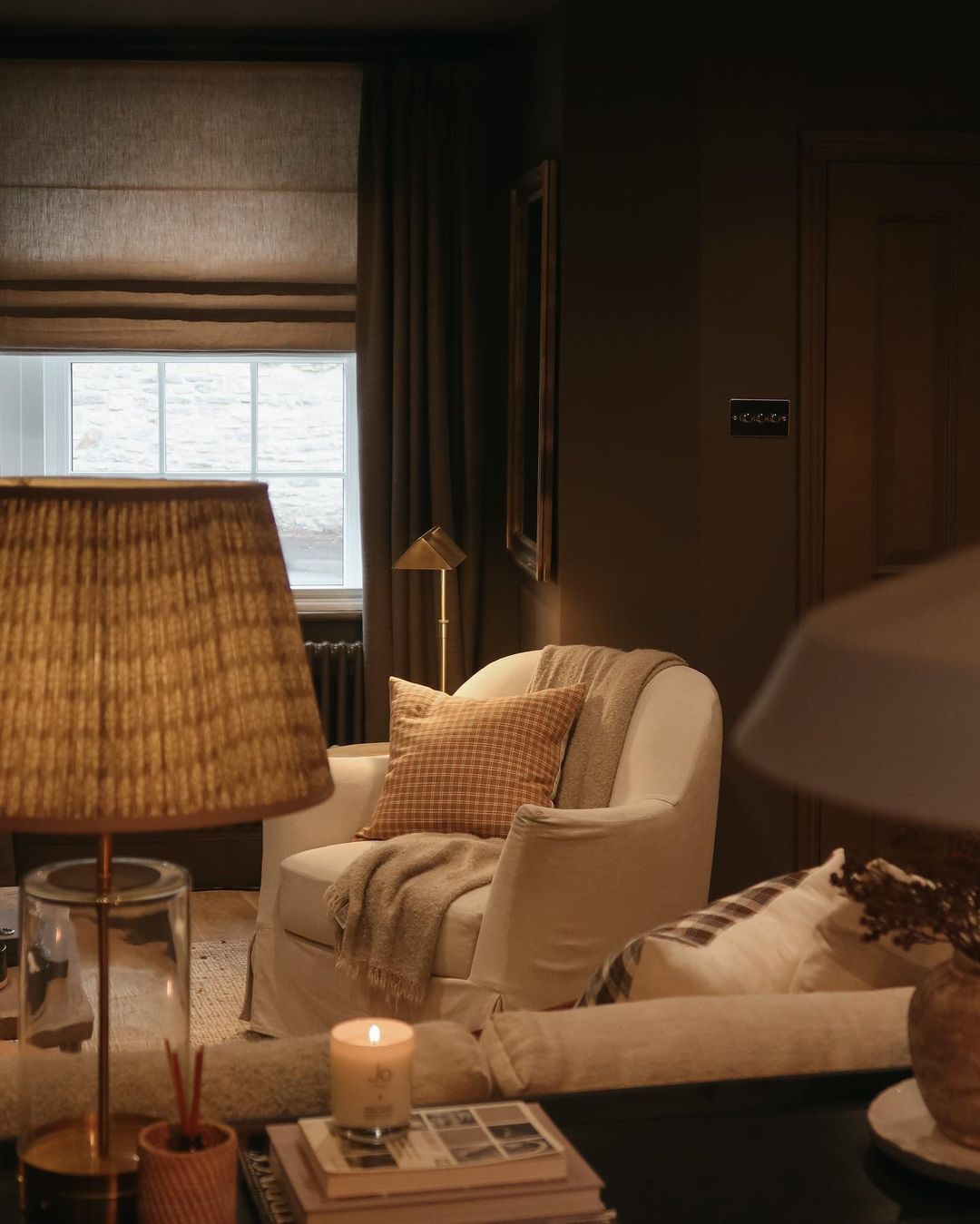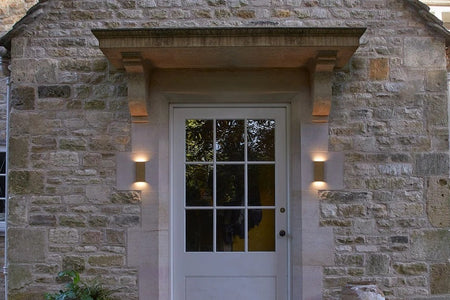
Understanding how to layer light is the key to great lighting design and a beautiful, atmospheric home. Here’s Pooky’s complete, updated guide to layering light, including the three main types of lighting and some practical room-by-room tips...
What is layering light - and why is it important?
Lighting is divided into three main types:
- Ambient light (the general level of available light in a room).
- Task lighting (stronger, targeted light which allows you to carry out practical activities).
- Accent lighting (used to highlight certain features or areas within a room).
Layering light is about balancing these three kinds of light to create atmosphere in a room.
In the world of interior design, layering is the business of putting together different textures, colours, fabrics and materials to create interesting, individual rooms. Layering light is quite similar: it’s about combining different kinds of light to create a particular mood or feel.
It’s not only domestic interiors that use layered light to achieve a desired atmospheric effect. Think about how churches have for centuries combined lamps, torches, chandeliers, stained glass windows and candles to make beautiful sanctuaries from everyday reality…

The Bacalayon Church in the Philippines – a positive symphony of lighting layers. Image: creative commons
In the home, layering light helps you to bring a room to life, or stamp your personality on an interior – but it also brings versatility and flexibility. Light can be functional, or practical, or decorative. Layering allows you to emphasise different aspects for different purposes.
Mixing and matching multiple light sources means that the room you use for work in the daytime can be transformed into an elegant space for entertaining in the evening and a cosy nook for reading late at night.
The three main types of lighting
Like so many things to do with design, layering light is a bit of a mixture of art and science. True, some people just seem to naturally have an eye for interior design and an instinct for putting stuff together in a space and making it all look awesome. But even if you don’t feel blessed with a gift for such things, there are some basic principles that anyone can learn.
The key is to understand the three main types of lighting:
Ambient lighting
Ambient lighting is the basic general illumination; the kind you need to move your way around a room without bumping into the furniture. In most homes, it’s the light that comes on when you flick the main switch. Ambient lighting is like the canvas on which you paint your overall light ‘picture’. It doesn’t have to come from a single, central ceiling source like a pendant light – recess lights, wall-mounts, chandeliers and floor lamps can all contribute to the ambient light.Accent lighting
Accent lighting is for aesthetic purposes – it allows you to highlight different parts of your room, or features like pictures, fireplaces or ornate pieces of furniture. It’s also known as ‘directional light’ and can be provided by wall sconces, chandeliers, carefully-positioned lamps or small recess lights. If ambient lighting is your canvas – spreading a uniform, diffuse light across a whole room – then accent lights are your marks on the canvas, drawing attention to the bits you want people to see. Typically, accent lights should be around three times stronger than ambient lights.Task lighting
Task lighting is your practical light. It means that when you’re performing specific activities you can see what you’re doing. Desk lamps allow you to see your keyboard; pendant lights hanging from the kitchen ceiling prevent you from chopping your fingers off when preparing the vegetables; vanity lights in the bathroom save you from poking your eyes out with your toothbrush, and so on. But again, task lighting needn’t only be practical. Lighting design, or layering, means you can use task lights in conjunction with ambient and accent light to create an overall effect.When you start thinking in terms of these three kinds of lighting – ambient, accent and task – you can plan how to balance your layers of light for an overall look and feel.
 Cosy layers of light in this room by @tobyshome
Cosy layers of light in this room by @tobyshome
Tips for layering light
1) Invest in a control device – Once you’ve decided your layers and installed your various lights and lamps, you could invest in a central control device for switching and dimming. In many systems you can preset ‘scenes’ that can be activated at the push of a button.2) Use lamps for all types of light – Lamps are your secret weapon in interior design, and can be used for all three kinds of light. For example, floor lamps can provide ambient light, or task lighting for reading, or accent light if positioned under a particular architectural feature. The other good thing about table lamps, desk lamps and floor lamps is that they can be moved around – providing even greater flexibility in your lighting design.
3) Bear in mind natural light – don’t forget to take account of the natural light in a room when designing your layers. Do you have large bay windows, or great big trees outside that block the sunlight? Night-time light such as streetlamps an also have a significant effect.
 Rumeli pendant light in clear glass
Rumeli pendant light in clear glass
Layering light: room by room
Living room – the key thing in a sitting room is not to rely on a single overhead light, as it makes for a flat, uninviting space. Having multiple light sources allows you to play around with different settings and atmospheres.
Great ideas for sitting rooms include pairing table lamps on either side of a fireplace and creating a reading nook with a floor lamp. You can also highlight artworks or architectural features with accent wall lights. See more in our guide Sitting room lighting - ideas and inspiration from the interior design experts.
Dining room – in a dining room or kitchen-diner, base your lighting around the table rather than the room itself. A chandelier or low-hung pendant over a round table, or a trio of small pendants over a long table, make a fabulous focal point (and will flatter your guests!). Then build up layers in the rest of the room with smaller wall lights or table lamps, allowing you to create moods, from a brightly-lit family Sunday lunches to intimate dinners for two. Find more dining room lighting tips here.
Kitchen - avoid relying totally on recessed spotlights and use pendant lights, table lamps and wall lights to create ‘zones’ in the kitchen. Pendants hung over an island or bar make all the difference to a beautiful kitchen. For a comprehensive guide, check out How to light a kitchen effectively and beautifully.
Bedroom – The bedroom is one room where everyone layers light by instinct, by using bedside lamps. But there are lots of other interesting things you can do with lighting in a bedroom, from wall fittings as reading lamps to using lighting to build on your colour scheme. Read about those and more in our guide Bedroom lighting - ideas and inspiration from the interior design experts.
 Pooky's Sycamore chandelier and wall light in bronze, styled by Ali. Photo: Max Attenborough
Pooky's Sycamore chandelier and wall light in bronze, styled by Ali. Photo: Max Attenborough
…And finally, don’t forget the fourth kind of light.
There is another kind of lighting in addition to ambient, task and accent. Decorative lighting is any light source that is intended primarily to look nice in itself. Think crystal chandeliers, or quirky art deco table lamps.
Of course, there’s no reason why the lamp itself shouldn’t be as beautiful as the light it casts, so if you really want to add some shine to your interior décor, sprinkle a few statement lamps around the home.
At Pooky we’ve got plenty of decorative lamps, as well floor lamps, desk lamps for task lighting and pendant lamps for ambience and more. Browse our lighting collection here…











